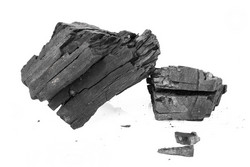Effect of biochar on natural ecosystems
Biochar is a charcoal-like material and is produced by heating wood or green waste to temperatures of 350 °C or above in the absence of oxygen. This process, known as pyrolysis, changes the chemical nature of the starting material, making it less biodegradable and increasing the time it can remain in the soil before decomposing. The EU-funded project BASE (Biochar application in a natural ecosystem) used techniques from soil physics, chemistry and biology to determine the ecological impacts of applying biochar to a north European grassland. The study ranged from the gene level up to the landscape level, enabling researchers to gain a complete picture of what happens when biochar is applied to soils. Cutting-edge techniques such as X-ray tomography, stable isotope probing techniques and DNA analysis in the form of DNA microarrays were used to demonstrate that not all biochars are the same. Physical and chemical properties can vary widely, affecting how biochar acts following its application to soil. Biochar is supposed to increase the water holding capacity in sandy soils. But it was found that biochar produced from cuttings from grassland did not significantly improve the hydrological properties of sandy loam soil. Microtomography was used to show that the material was highly hydrophobic, thereby preventing water from entering the pore space of the biochar particles in the soil. Additional studies revealed that biochar's effect on crop productivity most likely results from the fertilisation effects of nutrients within the biochar. This can be in the form of potassium from the ash constituent in biochar or nitrogen. However, this fertilisation effect was found to be less than for the material the biochar was originally produced from. This result highlights the importance of rigorously applying controls for experiments investigating the effects of biochar application to soil.







